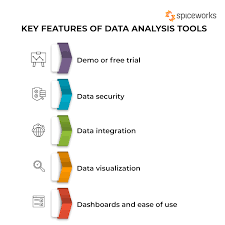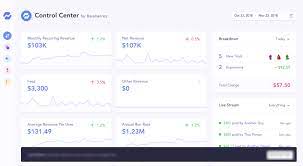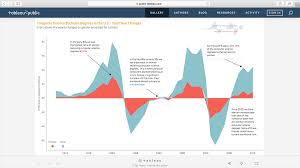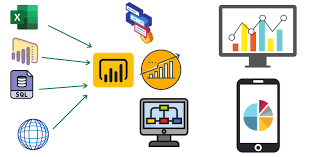The Rise of Trending Data Analytics Tools
Data analytics has become an integral part of decision-making processes in businesses across various industries. With the exponential growth of data, organisations are turning to advanced tools and technologies to extract valuable insights and gain a competitive edge. Let’s explore some of the trending data analytics tools that are shaping the landscape:
Tableau
Tableau is a powerful data visualization tool that allows users to create interactive and shareable dashboards. Its user-friendly interface and robust features make it a popular choice for businesses looking to visualise and analyse data effectively.
Power BI
Microsoft Power BI is another leading data analytics tool that offers advanced analytics capabilities, interactive visualisations, and seamless integration with other Microsoft products. It enables users to transform raw data into meaningful insights for informed decision-making.
Python with Pandas
Python, coupled with the Pandas library, is widely used for data manipulation and analysis. Its versatility, ease of use, and extensive community support make it a preferred choice for data scientists and analysts working on complex datasets.
Google Data Studio
Google Data Studio is a free tool that allows users to create customisable reports and dashboards using data from various sources such as Google Analytics, Google Ads, and BigQuery. Its intuitive interface and collaboration features make it ideal for sharing insights across teams.
Apache Spark
Apache Spark is a fast and general-purpose distributed computing system that provides in-memory processing capabilities for big data analytics. It offers high performance for large-scale data processing tasks, making it suitable for real-time analytics applications.
In conclusion, the demand for efficient data analytics tools continues to grow as businesses recognise the importance of leveraging data-driven insights for strategic decision-making. By utilising these trending tools, organisations can unlock the full potential of their data assets and stay ahead in today’s competitive market environment.
Top 5 FAQs on Trending Data Analytics Tools: Best Options, Current Demands, and Key Types
- What is the best data analysis tool?
- Which tool is on demand for data analyst?
- What is the trend in data analytics?
- What are the 4 types of data analytics tools?
- What are the 5 types of data analytics?
What is the best data analysis tool?
When it comes to identifying the best data analysis tool, the answer largely depends on the specific needs and requirements of the user or organisation. There is a plethora of data analytics tools available in the market, each offering unique features and capabilities. Some popular choices include Tableau for its robust visualisation capabilities, Power BI for its seamless integration with Microsoft products, Python with Pandas for its flexibility in data manipulation, Google Data Studio for its customisable reporting features, and Apache Spark for high-performance big data processing. Ultimately, the best data analysis tool is one that aligns closely with the user’s objectives, technical expertise, and budget constraints, enabling them to derive actionable insights from their data effectively.
Which tool is on demand for data analyst?
In the realm of data analytics, the demand for tools that empower data analysts to extract actionable insights from complex datasets is ever-evolving. Currently, one tool that stands out as being highly sought after by data analysts is Tableau. Known for its intuitive interface and robust visualisation capabilities, Tableau enables analysts to create interactive dashboards and reports that facilitate data-driven decision-making. Its popularity stems from its ability to streamline the analysis process and present findings in a compelling and easily digestible format. As organisations increasingly rely on data to drive strategic initiatives, Tableau remains a top choice for data analysts seeking a powerful and versatile tool to enhance their analytical workflows.
What is the trend in data analytics?
The trend in data analytics is moving towards the adoption of advanced tools and technologies that enable businesses to extract valuable insights from vast amounts of data. Organisations are increasingly turning to innovative data analytics tools such as Tableau, Power BI, Python with Pandas, Google Data Studio, and Apache Spark to enhance their decision-making processes and gain a competitive advantage. These tools offer powerful data visualisation, advanced analytics capabilities, seamless integration with other platforms, and high-performance processing for big data applications. By leveraging these trending tools, businesses can harness the power of data to drive strategic initiatives and achieve sustainable growth in today’s data-driven landscape.
What are the 4 types of data analytics tools?
In the realm of data analytics, there are four main types of tools that play crucial roles in extracting insights from data. The first type is descriptive analytics tools, which help in summarising historical data to provide a better understanding of past trends and patterns. Next, predictive analytics tools utilise statistical algorithms and machine learning techniques to forecast future outcomes based on historical data patterns. Prescriptive analytics tools take it a step further by recommending actions or strategies to optimise decision-making processes based on predictive insights. Lastly, diagnostic analytics tools focus on identifying the root causes of specific events or issues by examining data relationships and dependencies. These four types of data analytics tools collectively empower businesses to make informed decisions and drive strategic growth initiatives through actionable insights.
What are the 5 types of data analytics?
In the realm of data analytics, there are five primary types that play crucial roles in extracting insights from data: descriptive analytics, diagnostic analytics, predictive analytics, prescriptive analytics, and cognitive analytics. Descriptive analytics focuses on summarising historical data to provide a clear understanding of what has happened. Diagnostic analytics delves deeper into why certain events occurred by identifying patterns and relationships in the data. Predictive analytics utilises statistical algorithms and machine learning techniques to forecast future trends and outcomes. Prescriptive analytics goes a step further by recommending actions based on predictive insights to optimise decision-making processes. Lastly, cognitive analytics involves advanced technologies like natural language processing and sentiment analysis to extract valuable insights from unstructured data sources. Each type of data analytics serves a distinct purpose in transforming raw data into actionable intelligence for businesses across various industries.






